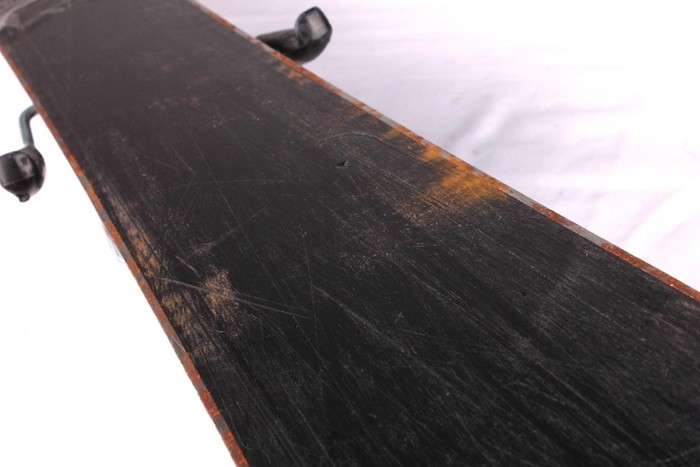Life is full of mysteries: Who built Stonehenge, is there a Loch Ness monster, and where the heck is Jimmy Hoffa?
But I think for many of us, “how long should my skis be” ranks right up there with them.
With good reason. Ski length isn’t a hard and fast number. Instead, it depends on a number of things: your height and weight, your ability, conditions (powder, groomers), and the type of skiing you do (racing, freestyle, moguls, trees).
In general, the rule is to pick a ski that’s somewhere between your chin and the top of your head. Shorter skis are easier to turn at slower speeds and handle the bumps better. And longer skis are better for speed (they deal with vibration better), crud, and powder. Also, the more advanced your level, the longer your skis can be, too.
Be sure to remember that your weight is more important than your height. Heavier skiers need bigger (or stiffer) skis for greater stability and surface area. Lighter skiers should think about smaller sizes as they may have less power to flex the ski. There’s a similar dynamic for skiing style: If you like to ski fast with wide turns, you need a longer ski, but if you’re a less aggressive skier who enjoys smaller turns, go shorter.
Then there’s rocker. Lots of skis today are constructed so the tip, tail, or both curve up. As a result, the center of the ski is the point of contact with the snow. This causes the edge to engage farther back than in a conventionally cambered ski. A rockered ski feels shorter and more nimble on packed snow, but provides the length you need in powder. So if you choose a rockered ski, you might want to go longer.
To add to the confusion, one manufacturer’s stated size may not be the same as another’s. For example, Brand X skis may seem longer than Brand Y’s, even though the length is supposed to be the same. Use the manufacturer’s size as a rough guide, and take it from there.
So what should you do? First, be honest about your ability, how you plan to use your skis, and how much you weigh (not always easy, I know). Second, talk to people who can provide you with some insight on how the ski you’re interested in performs. And third, get out there and demo. Different skis of the same length perform, well, differently. And since length can dramatically effect performance, it’s best to try the same ski in a couple different lengths.
You can also consult sizing charts. There are about a jillion of them on the internet. In fact, many brands have sizing charts on their websites. Look at too many, though, and you’ll begin to feel your eyes glaze over. Nonetheless, these can be a good starting point and may help you dial in the length you need.
And that’s about the long and short of it (sorry, couldn’t resist). Happy hunting!



